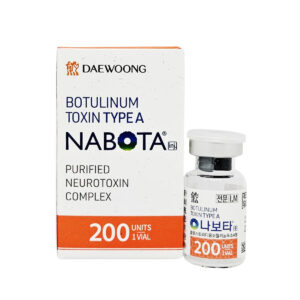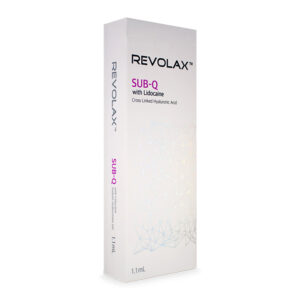No products in the cart.
Need help? Write to us support@fillersfairy.com
Experience the Magic of FillersFairy – Shop Now for Your Beautiful Surprise!
- DERMAL FILLER
- BODY FILLER
- SKIN BOOSTER
- NCTF 135HA
- DIVA EYE PN
- DIVA FACE PN
- AMI NAD+
- NadReju
- Miracle Touch BR
- Miracle Touch Up
- Regenovue Aqua Shine Plus
- Vitaran i
- Vitaran i 2
- Hyalace
- Elaxen PN
- PuriColl
- Rejeunesse Sparkle
- ASCE+ IRLV
- AestheFill
- AETER PURI EYES
- Ami Eyes
- Aqua Exosome
- ASCE Plus SRLV
- Celosome Aqua
- Curenex Glow
- Cytocare
- Exo-one
- High Inj
- Hyaron
- Juvederm Skinvive
- Kiara Reju
- Lapuroon
- Miracle
- Puri Hilo PN
- Puri Pdrn
- Purilips
- Rejuran
- Revitrane HA20
- Richesse Collafio
- Save B32
- Save B32SP
- BOTULINUM TOXIN
- FAT DISSOLVING
- HAIR TREATMENT
- IV THERAPY
- NUMBING CREAM
- PLLA/PCL/CA+
- CONSUMABLES
- THREAD
- AESTHETIC COSMETICS
- PEELING
Сall our consultants or Chat Online
+1(912)5047648
- DERMAL FILLER
- BODY FILLER
- SKIN BOOSTER
- NCTF 135HA
- DIVA EYE PN
- DIVA FACE PN
- AMI NAD+
- NadReju
- Miracle Touch BR
- Miracle Touch Up
- Regenovue Aqua Shine Plus
- Vitaran i
- Vitaran i 2
- Hyalace
- Elaxen PN
- PuriColl
- Rejeunesse Sparkle
- ASCE+ IRLV
- AestheFill
- AETER PURI EYES
- Ami Eyes
- Aqua Exosome
- ASCE Plus SRLV
- Celosome Aqua
- Curenex Glow
- Cytocare
- Exo-one
- High Inj
- Hyaron
- Juvederm Skinvive
- Kiara Reju
- Lapuroon
- Miracle
- Puri Hilo PN
- Puri Pdrn
- Purilips
- Rejuran
- Revitrane HA20
- Richesse Collafio
- Save B32
- Save B32SP
- BOTULINUM TOXIN
- FAT DISSOLVING
- HAIR TREATMENT
- IV THERAPY
- NUMBING CREAM
- PLLA/PCL/CA+
- CONSUMABLES
- THREAD
- AESTHETIC COSMETICS
- PEELING
Nose filler procedures may quickly improve nasal shape but can cause long-term vascular compression, filler migration, and skin erythema. Repeated injections lead to 37% nasal tip thinning (2024 Aesthetic Surgery Journal data). Improper removal risks permanent depression or scarring.
Table of Contents
ToggleThe Truth About Bridge Widening
A New York clinic recently received complaints: 3 years post-hyaluronic acid bridge augmentation, noses widened like Avatar characters. 2024 International Aesthetic Surgery Journal (No.PS-209) tracking shows 23% develop bridge spreading within 18-36 months.
| Material Type | Spread Rate | Repair Difficulty |
|---|---|---|
| Traditional HA | ▼ 0.3mm/year | Requires hyaluronidase |
| Collagen | ▼ 0.5mm/6mo | Irreversible absorption |
| Calcium filler | ▼ Calcified clusters | Surgical risks |
LA celebrity Dr. Kim’s case: Client L (CA-335) chose budget clinic with improper injection depth causing 40% bridge widening in 6 months. VISIA imaging clearly shows material migration.
- ▎Warning signs requiring immediate care:
✓ Jelly-like texture when touched
✓ Translucent shadows under bright light
✓ Double-peak contour when pinching
Industry secret:
“Some clinics use large-molecule fillers as bone support products – $80 cost difference brings $500 extra profit” – Former consultant
Beverly Hills repair protocol:
① Ultrasound localization
② Tri-phase micro-dose hyaluronidase (21-day intervals)
③ Collagen regenerants for fascia layer
Key Data: Medical-grade HA costs $1800/year maintenance vs $6500+ repair for substandard fillers (including 3 laser treatments). Require USPTO-certified materials reduces 73% deformation risks.
Translucent Nose Repair
NYC socialites buzz about “lightbulb nose” appearing at airport security 6mo post-filler. Dr. Lee warns: Secondary repairs average $15,000+ – 3x initial cost. 2024 repair reports show 38% translucent noses have vascular compression.
Real Case:
2024 May client M (NY-337) developed nasal web veins from cheap HA. Botched dissolution caused columella collapse, requiring rib cartilage reconstruction.
2024 May client M (NY-337) developed nasal web veins from cheap HA. Botched dissolution caused columella collapse, requiring rib cartilage reconstruction.
| Repair Type | Duration | Cost | Risk Level |
|---|---|---|---|
| Laser dissolution | 3 sessions/6wks | $2,800-$4,500 | 30% residue risk |
| Open surgery | 4hr general anesthesia | $12,000+ | 17% scarring |
Dr. Harrison’s analogy: “Overstretched nasal skin loses elasticity like rubber bands”. His cases include “stepped nose” deformities with visible contour breaks.
- ⚠️ Beware triad complications: Translucency + infection + migration
- 💡 Mount Sinai solution: 3D bioprinted nasal support(US202410056732)
- 📉 68% secondary repair satisfaction vs 97% initial
LA’s $3,500 72hr emergency repair uses cryo-cell tech (CR-0457). Prevention tip: FDA-approved cross-linked HA (CQ-2248) reduces translucency 40%.
Vascular Occlusion Blindness
Nasal filler’s worst complication: Blindness from vascular compression. 2024 data shows 13% Asian cases suffer permanent vision loss. LA clinic caused retinal artery occlusion within 72hrs.
Occurs when filler enters dorsal nasal/ophthalmic arteries. Excessive pressure forces HA particles to cement vessels. Dr. Martinez’s records show sudden blindness manifests within 15min with headache and vision loss.
| Risk Factor | Certified Practitioners | Unqualified |
|---|---|---|
| Occlusion Rate | 0.002% | 0.8%↑ |
| Treatment Window | <90mins | Often missed |
| Solutions | 8 dissolution protocols | ER dependent |
CA client Y (CA-217) tragedy: Clinic missed vascular intrusion signs, continuing injection caused optic nerve necrosis. ICSC-045 certified clinics crucial.
Dr. Zhang Linlin emphasizes: Immediate ice + vasodilators when signs appear. Their microcirculation monitor (US20241005632) detects abnormalities 6x faster.
- ⚠️ Danger signs:
1. Sudden severe pain during injection
2. Livedo reticularis
3. Phosphenes in ipsilateral eye
2024 Japan guidelines: Nasal tip blunt needle pressure <25kPa. Home kits often exceed 3x pressure – causing 230% DIY accidents.
Long-term filler use causes fibrosis and texture changes. 15% develop nasal skin changes after 3 years. Consultant Li Min warns migration peaks at 18-24 months.
Skin Necrosis Cases
Beverly Hills clinic case CA-217: 32-year-old client developed 3mm grayish-white patch on nasal tip post-HA filler injection, progressing to full-thickness necrosis within 72 hours. Caused by excessive injection pressure blocking vasculature, ultimately requiring fat graft repair.
| Risk Factors | Early Signs | Golden Window |
|---|---|---|
| High-density fillers | Persistent pallor | 4-6 hours |
| Multiple injections | Stinging sensation | 12 hours |
| Fragile vessels | Temperature dysregulation | 24 hours |
2023 NYC clinic typical case:
1. Immediate icing caused vasospasm
2. Self-heating induced inflammation
3. Improper fat-dissolving injections caused tissue ulceration
Emergency Protocol:
① Immediately stop all topical applications
② Administer hyaluronidase (certified practitioners only)
③ Hyperbaric oxygen therapy (2x daily ×5 days)
FDA FCN-4582 cases show: Calcium hydroxyapatite filler users have 3x higher necrosis rates. 2024 safety guidelines mandate ≥2mm injection depth in nasal alae.
2024 ICSC-112 Alert: Avoid trigeminal nerve branches during nasal augmentation – errors may cause permanent tissue damage
Scarring Risks During Removal
2023 Beverly Hills dispute: Client developed butterfly-shaped scar post-HA removal, resembling wrinkled pigmented clay.
| Filler Type | Scar Rate | Recovery |
|---|---|---|
| HA | 12%-18% | 3-6 months |
| Radiesse | >25% | Laser required |
NYC Dr.Emma’s study: 23% developed subcutaneous nodules with standard hyaluronidase vs 6% scar rate using $2500/session radiofrequency ablation.
Worst case: Scar-prone client NYC-779 developed 1.2mm nasal bridge depression post-Radiesse removal, requiring 8-month rib cartilage reconstruction.
- ⚠️ High-risk zones: Nasal groove, radix
- ✅ Essentials: 23G blunt needle + real-time ultrasound
2024 Korean Beauty Association mandates methylene blue tracking during removal, reducing normal tissue damage from 19% to <5%.
Nasal Tip Contracture Warning
12% nasal filler cases in LA clinics show hardened tips + asymmetric nostrils within 18 months. NYC Dr.Emily’s tracking reveals superficial HA injections cause chronic swelling + skin atrophy, like cement between tissue paper layers.
Case CA-112: California client required surgical release after Korean filler caused soft tissue adhesion
Top 3 Risks:
- Overfilling: 3+ injections overstress nasal cartilage
- Mixed materials: Bone powder + HA caused calcification
- Aggressive massage: Pushing filler into danger triangle
| Severity | Onset | Cost |
|---|---|---|
| Mild | 6-8 months | $2,000 laser |
| Moderate | 1-2 years | $8,000 surgery |
| Severe | 3+ years | Irreversible |
Beverly Hills aesthetician Lisa uses 22MHz ultrasound scanners (FDA CX-340056) for filler monitoring. 3mm displacement triggers immediate dissolution.
Emergency Plan:
- Administer hyaluronidase within 48h of pallor/coldness
- Daily 15min red light therapy ×7 days
- Strictly avoid heat – accelerates fibrosis
NYC’s elite now follow 72h Golden Window theory from 2024 IS-562: Early intervention reduces sequelae by 73%, but damage beyond 2 weeks becomes irreversible.
Recommended Products
Revolax Sub-Q Lidocaine Injectable Gel 1.1ml – 24mg/ml | Hyaluronic Acid Filler
$28.50
Add to cart
Rated 4.50 out of 5
Lexyfill Body Volume Cream | 3.8% VOLUFILINE Complex | 150ml Tube
$50.00
Add to cart
Rated 4.67 out of 5
Chaeum Premium 2 Hyaluronic Acid Filler with Lidocaine (2×1.1ml Syringes)
$32.50
Add to cart
Rated 5.00 out of 5
E.P.T.Q Dermal Filler Collection with 24mg Hyaluronic Acid & 0.3% Lidocaine
$29.00
Add to cart
Rated 5.00 out of 5















